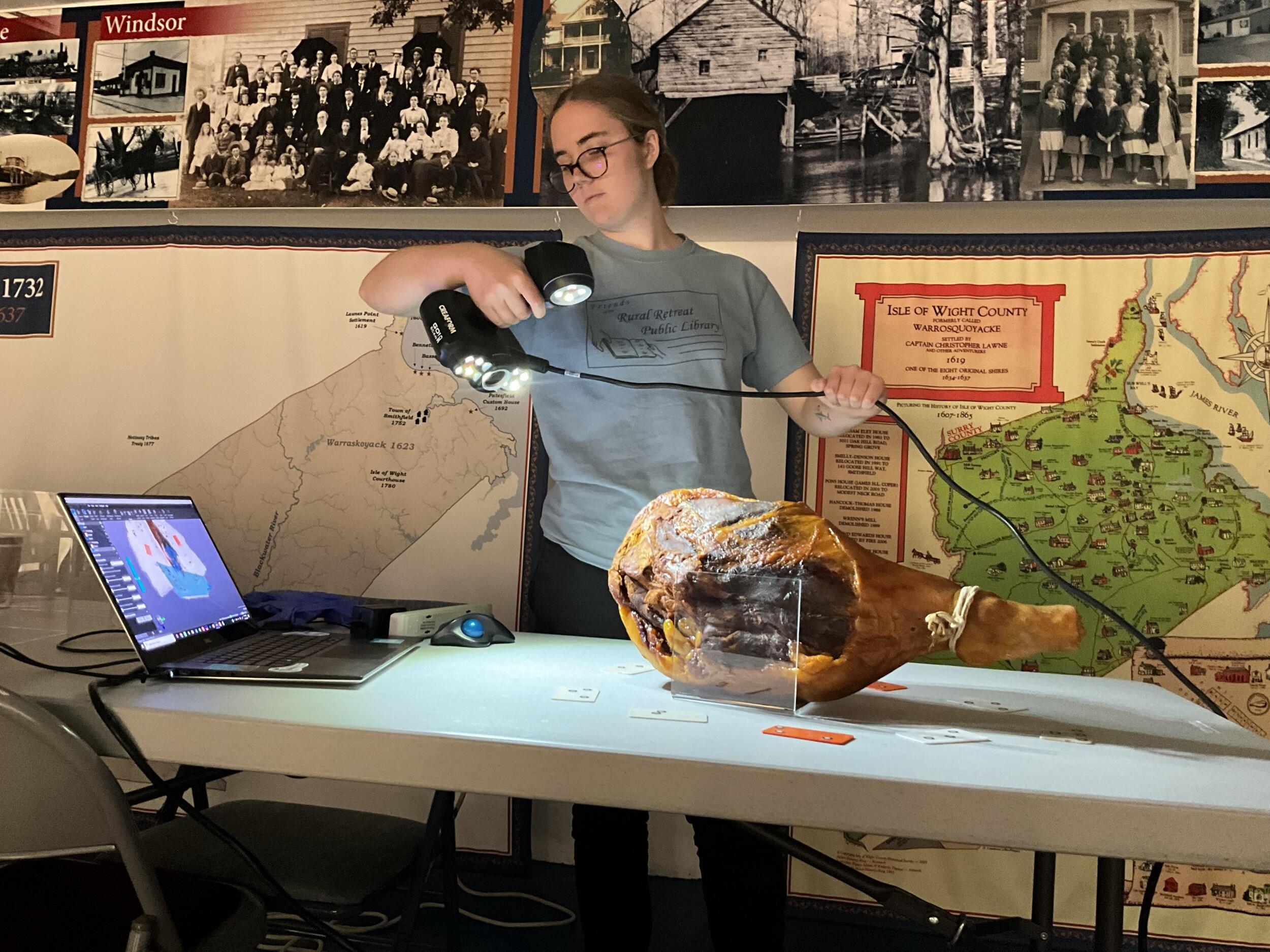
Sept. 17, 2024
Nothing ham-handed about this project: VCU helps digitally preserve the last Genuine Smithfield Ham
Share this story
Bernard Means has held history in his hands before. He’s just not sure it’s ever been quite so greasy.
Over the summer, the Virginia Commonwealth University professor and students in his summer field school traveled to Smithfield, about 70 miles southeast of Richmond, to digitally scan items from the Isle of Wight County Museum collection. Among them: the last Genuine Smithfield Ham.

“I probably went through eight or nine pairs of gloves just moving the ham around for the scanner,” said Means, Ph.D., an anthropology professor in the School of World Studies in the College of Humanities and Sciences. “We ran out of one of the boxes of gloves.”
Means is director of the Virtual Curation Laboratory, which creates 3D digital models of historical, archaeological and paleontological objects used for teaching, research and public outreach. And this Genuine Smithfield Ham is indeed historic.
Such hams are defined by state law by their aging and curing process, which must be done within the town of Smithfield. In January, Smithfield Foods, the last such producer of Smithfield ham within the town limits, announced it would discontinue production of the brand-name Genuine Hams, citing consumer preferences.
Now, the last Genuine Smithfield Ham cured in the town sits in a museum display case alongside other significant relatives. They include the world’s largest ham, a branded Genuine Smithfield Ham cured in the 1930s and, yes, the world’s oldest ham: It turned 122 in July, has a social media presence and is the star of the museum’s 24-hour HAM CAM livestream.

Previously, Means and his lab have worked with the Isle of Wight County Museum to conduct 3D scans of items in its collection. The lab’s 3D scan of the latest ham can be downloaded for free on Sketchfab.
“Scanning is a wonderful tool for museums,” said Jennifer England, director of the Isle of Wight County Museum. “It enables us to print objects for visitor interaction, thereby giving them a tactile experience where there normally would not be one. It is also a wonderful way for museums to study objects. Since our hams are organic materials, they will change over time through processes such as dehydration. Scanning them means that we can rescan them later to detect change.”

Smithfield has long been considered the ham capital of the world. Hams have been produced there since the 1600s, and the Smithfield Ham name became popular as local businesses began to ship the product around the world. A Genuine Smithfield Ham has been defined by state law since 1926.
As Means and his students have discovered over the years, snap-shotting this particular brand of history can be tricky.
The hams are heavy, slippery and give off a strong smell. Dealing with the slimy surface is an ongoing struggle. But despite the ongoing worry that a ham will end up on the floor, Means is glad to play a role in the preservation of a bit of Virginia history – as are his students.
Anna Carter, who earned her bachelor’s degree in anthropology from VCU in May, served as the primary scanner for the last Genuine Smithfield Ham. Was she honored?
“Very honored,” she said. “Very honored and very greasy.”

Subscribe to VCU News
Subscribe to VCU News at newsletter.vcu.edu and receive a selection of stories, videos, photos, news clips and event listings in your inbox.










